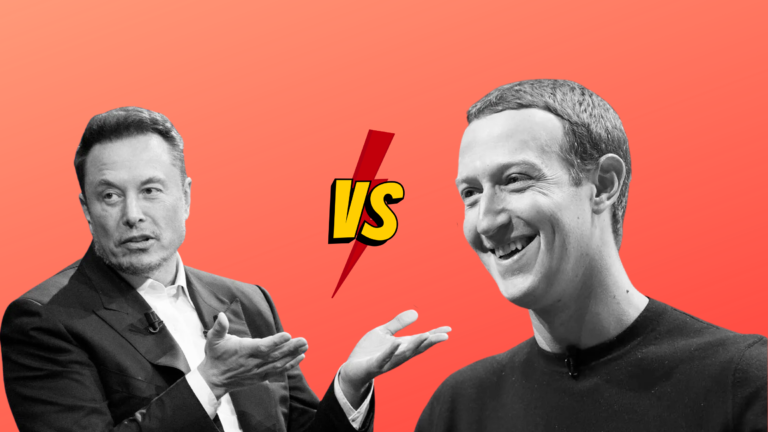Introduction
Online dating is a depressing landscape for startups. For an industry that in 2022 generated 5B in revenue, new entrants in the space receive a surprisingly low amount of interest from venture capitalists. Indeed, analyzing industry investment on Crunchbase reveals a graveyard of small seed-funded apps that failed before they could raise another round of capital. As I discussed in “Network Effects and a Lack of Innovation Within Dating Apps,” this might be a consequence of extreme market consolidation. An individual’s decision between two dating apps will largely be influenced by the pool of users that exist on the respective services. In the online dating sphere, existing demand attracts more demand and it has allowed a handful of platforms to build not pools, but oceans; they enjoy competitive advantages based on “network effects.”
Founded in 2017, Marriage Pact is a bit of an anomaly: it is one of a very select few matching services that have managed to gain traction despite the dominance of the industry’s incumbents. Hily and Clover represent some others, but they accomplished this through massive marketing campaigns that relied on very deep pockets. In contrast, Marriage Pact was already popular before it received a comparably smaller 5M seed boost in 2022.
In short, Marriage Pact is not so much a dating platform as it is a matching questionnaire for college students. Once a year, students on one of the Pact’s currently serviced college campuses fill out an approximately 50-question survey spanning their “likes, loves, and pickiest non-negotiables.” This data is then fed into a proprietary algorithm that generates matches for compatible sets of participants. Since its inception at Stanford University, Marriage Pact has expanded to 78 campuses and boasts 330,000 total participants. Its ability to remain relevant during this time period is just as impressive as its current size (1).
In this article I will provide a nuanced account as to why Marriage Pact has been successful in the midst of this adversity.
Reasons for Marriage Pact’s success:
(1) Students Matching With Students
This is quite obvious, so I will keep it brief. As discussed in my previous post, emerging platforms can avoid some of the network-based advantages of incumbents by targeting niche demographics: apps solely built for individuals that share a similar age, religion, sexuality, and so forth. Marriage Pact is built for students. There is certainly some appeal in knowing that your match will come from the same university.
While Tinder has a far larger user base than Marriage Pact, I highly suspect that at any given time Tinder actually has less active users of a particular university than Marriage Pact has when they do their annual matching for the same school. For example, the Marriage Pact yielded 4,148 participants at the University of Pennsylvania in 2022 (2).
(2) Annual Matching.
Unlike any popular dating platform/service that I am aware of, the Marriage Pact does not offer a continuous service; as aforementioned, you fill out one survey and get one match per year.
While this does perhaps eliminate the well-documented issue of “choice overload” within contemporary platforms, there is something of much greater importance going on here: it allows Marriage Pact to functionally operate at a much smaller scale. Let me explain…
Recall my brief discussion of network effects – it does not matter how amazing your dating app is if the pool of prospects is too small. I have investigated a litany of dating apps that have innovative structures and features that truly blow Tinder out of the water (a great example is Snack). However, these apps are ghost towns. Demand attracts demand.
In a word, Marriage Pact essentially avoids this chicken and the egg scenario by collecting survey responses over a period spanning a couple of weeks. They only generate matches once the pool is large enough. If there is a single reason for the Pact’s success, this is it.
In fact, it is my opinion that this is the only way to effectively structure a sustainable dating service that demographically targets students. At any given time, there will be too few active students to populate the app. This could partly explain why popular dating apps (e.g, Tinder, Bumble, Hinge) do not offer university-specific filtering options.
(3) Compatibility Matching for a Younger Generation.
Survey-based matching is nothing new. In fact, this type of approach predates the “swipe-based” structure that currently characterizes most contemporary services. eHarmony’s compatibility matching system, for example, was introduced in the year 2000. It was famously developed by a group of psychologists that carried out studies on over five-thousand married couples (3). They have had two decades, millions of dollars, and many competent minds to further refine it. Given this, it would appear difficult to argue for the scientific superiority of the Pact’s research-backed questionnaire.
The (more important) difference? Young people actually use Marriage Pact. As one blogger writes about eHarmony users: “sorry to break it to you but, yes, you are old” (4). Even if only for a moment, Marriage Pact has managed to bring Gen Z back to an online dating model that prioritizes personality-based compatibility through surveys grounded in psychological research. How they have effectively managed to do this is a topic for another discussion: likely some combination between branding and growth strategy. Simply put, they have made this structure of online dating cool, or at least socially acceptable.
In short, I think this creates somewhat of a novel appeal for university students. It is a refreshingly authentic alternative to prevalent swipe-based apps that prioritize quick matching decisions based almost exclusively on physical attraction. Even if it is not technically new, it is in a way new for the younger generation.
(4) Marital Backups versus Intimate Partners.
Marriage Pact is really an online dating service. But it sort of isn’t. Their website actually claims to help participants find “marital backup plans” rather than intimate partners. I suspect that most use cases of the Pact would prove contrary to this focus, but regardless, it manifests itself in at least one important difference: people in relationships can still use Marriage Pact.
With options ranging from “totally taken” to “help me pls,” one question asked by Marriage Pact is: “How Single Are you?” The idea here partly being that even if you are “totally taken,” you can still participate in the annual survey and be matched with a prospective friend. Since much of Marriage Pact’s success seems to be based on their ability to generate enough hype on a campus each year, the inclusion of a wider audience is important; they both contribute to the size of the match pool and to the word-of-mouth spread.
Perhaps another benefit to the “marital backup” branding strategy is that it removes some of the stigma typically associated with online dating. Participants need not acknowledge to others or themselves that they are “desperate enough” to try online dating.
(5) More Women than Men.
When dating app “Coffee Meets Bagel” was featured on Shark Tank, founder Arum Kang emphatically claimed that “the secret to success in online dating is winning over women.” Popular dating platforms, however, struggle to maintain an even ratio: Tinder’s user base is only 21.9% women, Badoo 35%, and Bumble 43% (5).
From my admittedly limited information, this does not appear to be a problem for Marriage Pact. In fact, they might have the opposite issue. Year after year at the University of Pennsylvania, there were more women than men in the heterosexual pool: 344 surplus in 2022, 621 in 2021, and 500 in 2020 (2). I have no reason to believe that other universities experienced vastly different distributions.
I agree with Kang’s sentiment and, all things considered, this bodes well for Marriage Pact.
How Could Marriage Pact Be Better?
Thus far I have discussed the Marriage pact from a positive perspective: I appreciate its commitment to compatibility and its competitive soundness from a business perspective. It is also worth noting that I admire Marriage Pact for a level of data transparency that is rare for online dating services. Now for some perceived issues and suggestions regarding room for improvement…
(1) Physical Attraction is Important. Very important.
I have not revealed up until this point that I have actually used Marriage Pact. The annual matchmaking process was popular for each of my four years at Penn. With that being said, I rarely conversed with my matches and never once met any in person. Many of my friends reported similar outcomes. The verdict: there was too much discrepancy in attractiveness amongst matches. After all, the matching process is entirely blind and accordingly reciprocated physical attraction is left up to chance.
I have written about this at length in “Love is Blind as a Dating App,” but in short, physical attraction is immensely important in the early stages of (intimate) relationship development. It has been empirically shown time and time again to be the biggest determinant of initial romantic engagement (6,7,8). Unreciprocated physical attraction is somewhat of a non-starter, and it can be especially disappointing for Pact participants who only get one shot per year, and must wait 1-2 weeks for their match.
This would be less of a problem for Marriage Pact if participants were truly using the service for “marital backups” or to meet friends. However, Marriage Pact’s own data contradicts this notion: at UCLA, Georgetown, and UVA approximately 40% of participants rated themselves as a seven on a one-to-seven singleness scale (the aforementioned “help me pls” level). The remaining responses are heavily skewed to the side of singleness (9). This indicates that participants are largely using Marriage Pact as a dating service to find romantic partners.
The challenge for Marriage Pact is to incorporate physical desirability in a manner that does not threaten its authentic brand. Worse yet, it would appear to require a massive overhaul of the sites existing operating structure. Stay tuned for my solution.
(2) Scalability and Maintenance
The strength of Marriage Pact’s model coincides with some difficulties. Their ability to penetrate college campuses necessitates the arduous task of both establishing and maintaining internal “advocates” within these universities. At Penn, for example, representatives within student government were responsible for reminding students each year of Marriage Pact.
From my (assume speculative) understanding, this was a relationship void of monetary incentive… but what happens when these advocates graduate? As Marriage Pact grows, ensuring the continuation of the tradition will be very difficult to manage across dozens, if not hundreds of campuses. To ensure continuous adoption it seems that some sort of contractual arrangement would need to be in place. This, of course, is nearly an impossible task when considering the varying structures and policies within the bureaucracy of higher education.
Ideally, Marriage Pact will one day achieve a level of reputation within and across universities such that it does not require annual reminders from internal advocates…but this is far from guaranteed. This is not Facebook. To reiterate, it is not something that is continuously used. It ebbs and flows within the consciousness of individual participants and their generations; it needs someone each year to shout to all students “hey, it’s time for Marriage Pact!” It needs someone to replace that someone after four years.
My Suggestion: Two Birds With One Stone
So we have two challenges: Incorporating physical desirability and maintaining frictionless relevance. Here is somewhat of an outlandish, underdeveloped idea that might just solve both problems at once: a partnership.
Incorporating physical desirability would only be necessary for those participants (indeed the majority) with a genuine interest in finding a romantic partner. Statistically speaking, the majority of this majority will have at some point tried their luck on Tinder, Bumble, or Hinge. That is, much of the data Marriage Pact needs pertaining to the physical attractiveness of their participants already exists in the form of individual desirability scores calculated by these popular dating apps.
In my opinion, a “deal with the devil” might just be what Marriage Pact needs. A data-sharing relationship would allow for the most seamless integration of physical attraction into the Pact’s algorithm. Participants could opt-in to have their desirability scores transferred from Hinge, for example, before matches are generated. Furthermore, an endorsement from Hinge would help on the relevance front. In an ideal world, they would even promote Marriage Pact’s annual matching event.
Why would Hinge (or one of the other giants) agree to this? This is more difficult. For one thing, however, I do not think Marriage Pact is perceived as a direct competitor. Its periodic structure makes its value proposition just different enough from Hinge that I think both could exist harmoniously and in fact compliment each other. Without going down a rabbit hole, I do think there is room for their brands to enhance one another. At the very least, the mutual benefits of a relationship could be easily tested by arranging a couple of experiments at a select number of the Pact’s campuses.
Sources
(1) “About Marriage Pact.” Marriage Pact, n.d., marriagepact.com/about.
(2) Publicly revealed information sent to Penn participants of Marriage Pact
(3) Finkel, Eli J., et al. “Online Dating: A Critical Analysis From the Perspective of Psychological Science.” Psychological Science in the Public Interest, vol. 13, no. 1, 2012, pp. 3–66.
(4) Lambert, Nurah. “Dating Apps: A Taxonomy.” The Tulane Hullabaloo, 26 Sep. 2018.
(5) Mugayi, Tee. “Yes, Online Dating Is Harder For Men, But It’s Not For The Reasons You Might Think.” Medium, 2 Oct. 2022
(6) Rudder, Christian. (2014). Dataclysm: Who We Are When We Think No One’s Looking. New York, Crown Publishers.
(7) Schöndienst, Valentin & Dang-Xuan, Linh. (2011). The Role Of Linguistic Properties In Online Dating Communication – A Large-Scale Study Of Contact Initiation Messages.
(8) Finkel, Eli J., et al. “Online Dating: A Critical Analysis From the Perspective of Psychological Science.” Psychological Science in the Public Interest, vol. 13, no. 1, 2012, pp. 3–66.
(9) O’Connor, Allie. “Quantifying “It’s complicated”: Looking at Singleness on a Spectrum.” Marriage Pact Stories, 23 Mar. 2023






